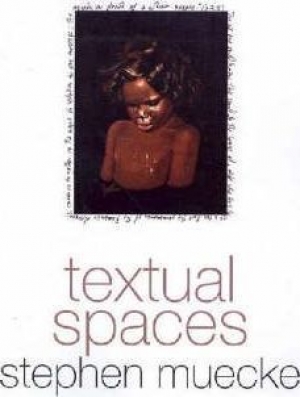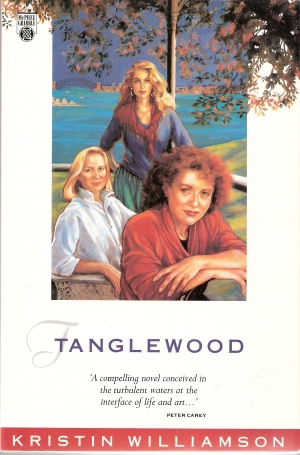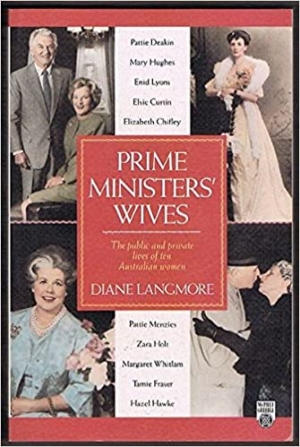Archive
There have been three years now of ‘Australian Voices’, but when in all that time have you heard a voice? The metonymic use of the word ‘voice’ to mean ‘way of using language’ has become so familiar we forget it’s figurative. But as far as sensory experience is concerned, reading this series has been about the look of typeface, the feel of paper; the only noise has been the turning of the pages. We’ve heard Australian voices in silence.
... (read more)David Goodman reviews 'Textual Spaces: Aboriginality and cultural studies' by Stephen Muecke
Stephen Muecke’s Textual Spaces offers both new material and versions of some of the essays he has published on Aboriginal and cultural studies published through the 1980s. Many of these have already been very influential, but the welcome appearance of the book invites consideration of the continuities in Muecke’s arguments, the programme they suggest.
... (read more)It’s high time that bookstores set aside a section for novels that document the increasingly familiar territory of the inner lives of middle-class white Australian women who grew up in the 1960s.
... (read more)Ian Buchanan reviews 'Prisoners of War: From Gallipoli to Korea' by Patsy Adam-Smith
The word history means many different things to different people. But generally speaking it entails an attempt by an author to explain, or make sense of, the past. That is, the historian gathers together the material, the evidence as it were, and from that draws a number of conclusions which we as readers are expected to believe. Prisoners of War, by Patsy Adam-Smith, encompassing three wars, from Gallipoli to Korea, is not that kind of history.
... (read more)Audrey Oldfield reviews 'Prime Ministers’ Wives: The public and private lives of ten Australian women' by Diane Langmore and 'Suffrage to Sufferance: 100 years of women in politics' by Janine Haines
Diane Langmore has given us a fascinating account of the lives of ten women, from Pattie Deakin to Hazel Hawke. She has explored the background of each, the attraction which ended in marriage to a politically ambitious man, and the adaptation of each to her husband’s obsessive struggle for the most powerful political post in Australia. Her analysis of the women’s relationship to their partners throws light on the personalities and attitudes of the men chosen by Australians to lead the nation. For the early sketches Langmore has drawn on diaries, newspaper reports, and the opinions of contemporaries; for the latter she has been able to add to her sources the opinions and musings, given in interviews, of the women themselves. Langmore writes with clarity and style, never belittling or patronising her subjects, and her sympathetic viewpoint enables the reader to appreciate the varied personalities of her subjects. She does not, however, fall into the trap of assuming that the public face of each woman is always the private one.
... (read more)Ian Reid’s Narrative Exchanges argues against older formalist and structuralist approaches to narratology, from Propp to Todorov. They reduced the play of narrative by insisting that texts possess an underlying fundamental ground, a ‘basic unity’ that is the ‘primary constituent of narrative’. Structuralism treats texts as self-contained semiotic systems, emphasising consistency, linearity, interlinked sequences, completion. Structuralists exhibit a ‘compulsion’ to order and classify texts in rigid, invariable, almost algebraic ways.
... (read more)Jonathan Holmes reviews 'Imagining the Pacific: In the wake of the Cook voyages' by Bernard Smith
At the conclusion of the fascinating essay ‘Coleridge’s Ancient Mariner and Cook’s Second Voyage’ in his recently published book Imagining the Pacific: In the Wake of the Cook Voyages, Bernard Smith writes:
... (read more)The most carefully planned and the most scientifically and efficiently conducted expedition ever made up to its time in the realm of reality provided the poet with a world of wonder and a nucleus of recollections from whence emerged in its own good time the most romantic voyage ever undertaken in the realm of the imagination.
Here it is, nearly Christmas, and as usual, the list of Books I Have Read is running into the hundreds, and I have that end-of-year mad, fleeting illusion that also afflicts exam-fevered students … that somehow it All Adds Up.
... (read more)Have you ever looked at a duck? There is more to it, to use that peculiar cliché, than meets the eye. Watching ducks has been my labour for some time, but, of course, it will be so only for a limited period. Still, I expect I will always retain the interest now that I have come to know ducks better.
... (read more)Traudi Allen reviews 'Robert Juniper' by Philippa O'Brien and 'Salvatore Zofrea: Images from the Psalms' by Ted Snell
Craftsman House has contributed substantially to bringing our art map up-to-date with the simultaneous publication of a West Australian and a New South Wales art history. One on the work of Robert Juniper and the other on that of Salvatore Zofrea make interesting comparison. The first presents the style· of art one might expect to ensue from that great Western expanse of desert while the other challenges such expectations as stereotyped and clichéd. Juniper set out to depict the landscape and to heroicise it, as has been our tradition; Zofrea, according to Snell, incorporates Australia in the international tradition of art history.
... (read more)








